 W
WThe Geheime Staatspolizei, abbreviated Gestapo, was the official secret police of Nazi Germany and in German-occupied Europe.
 W
WArkivet is the established name of Vesterveien 4 in Kristiansand, Norway. The building was constructed in 1935 for the Archival Services in Kristiansand, and in the periods 1935–1940 and 1945–1997 used by this institution. Nevertheless, the building is known as the headquarters of the Gestapo in southern Norway in the period 1942–1945. The building is owned and operated by the foundation Stiftelsen Arkivet. Arikivet is located in the residential area of Bellevue overlooking the western harbor of Kristiansand. The building in the functionalist style was completed in 1935, and was 8 March of that year officially adopted by the local department of the National Archives.
 W
WThe Carlingue were French auxiliaries who worked for the Gestapo, Sicherheitsdienst and Geheime Feldpolizei during the occupation of France in the Second World War.
 W
WColumbia concentration camp was a Nazi concentration camp situated in the Tempelhof area of Berlin. It was one of the first such institutions established by the regime.
 W
WEinsatzgruppen were Schutzstaffel (SS) paramilitary death squads of Nazi Germany that were responsible for mass killings, primarily by shooting, during World War II (1939–1945) in German-occupied Europe. The Einsatzgruppen had an integral role in the implementation of the so-called "Final Solution to the Jewish Question" in territories conquered by Nazi Germany, and were involved in the murder of much of the intelligentsia and cultural elite of Poland, including members of the Catholic priesthood. Almost all of the people they killed were civilians, beginning with the intelligentsia and swiftly progressing to Soviet political commissars, Jews, and Romani people, as well as actual or alleged partisans throughout Eastern Europe.
 W
WEL-DE Haus, officially the NS Documentation Center of the City of Cologne, located in Cologne, is the former headquarters of the Gestapo and now a museum documenting the Third Reich.
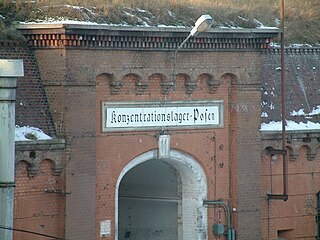 W
WFort VII, officially Konzentrationslager Posen, was a Nazi German death camp set up in Poznań in German-occupied Poland during World War II, located in one of the 19th-century forts circling the city. According to different estimates, between 4,500 and 20,000 people, mostly Poles from Poznań and the surrounding region, died while imprisoned at the camp.
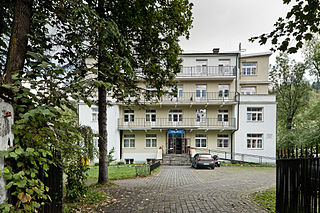 W
WThe Gestapo–NKVD conferences were a series of security police meetings organised in late 1939 and early 1940 by Germany and the Soviet Union, following the invasion of Poland in accordance with the Molotov-Ribbentrop Pact. The meetings enabled both parties to pursue specific goals and aims as outlined independently by Hitler and Stalin, with regard to the acquired, formerly Polish territories. The conferences were held by the Gestapo and the NKVD officials in several Polish cities. In spite of their differences on other issues, both Heinrich Himmler and Lavrentiy Beria had similar objectives as far as the fate of the prewar Poland was concerned. The objectives were agreed upon during signing of German–Soviet Frontier Treaty on 28 September 1939.
 W
WOperation Himmler, also called Operation Konserve or Operation Canned Goods, was a 1939 false flag project planned by Nazi Germany to create the appearance of Polish aggression against Germany. That was then used by the Germans to justify their invasion of Poland.
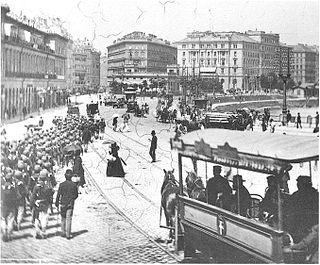 W
WHotel Metropole was a hotel in Vienna, Austria that was constructed in 1871–73. It was destroyed during World War II after serving as the Vienna headquarters of the Gestapo from 1938. The address was Morzinplatz, in the I. District Innere Stadt.
 W
WThe Kraków-Podgórze Detention Centre is a correctional facility located at ul. Stefana Czarnieckiego 3 in Kraków, Poland, in the municipal district of Podgórze. Originally, it was a turn-of-the-century county court and revenue service, built in 1905, from design by Ferdynand Liebling. At present, it is a community branch of Detention Centre Kraków, with main building located at ul. Montelupich 7 street. The Kraków-Podgórze Detention Centre specializes in drug-and-alcohol-addiction therapy and serves also as a temporary arrest facility. It was created in 1971 as a prison for men with the holding capacity of 207. It was made into a detention facility in 1990. There's a medical clinic and a dentist on-site. Prisoners who completed the recovery program work with mentally and physically disabled clients.
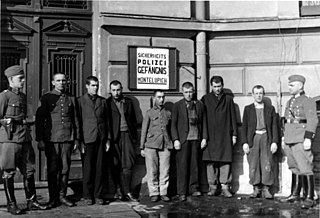 W
WThe Montelupich prison, so called from the street in which it is located, the ulica Montelupich, is a historic prison in Kraków from early 20th century, which was used by the Gestapo in World War II. It is universally recognized as "one of the most terrible Nazi prisons in [occupied] Poland". The Gestapo took over the facility from the German Sicherheitspolizei at the end of March 1941. One of the Nazi officials responsible for overseeing the Montelupich Prison was Ludwig Hahn.
 W
WNeue Bremm was a Nazi torture camp in Saarbrücken, set up in 1943 by the Gestapo intentionally with no oversight from other institutions. It was designed to break prisoners who were not destined for immediate death. Some prisoners were held only for a few weeks, others, much longer; both men, and women. During that time they were put to work in slave-labour commandos and broken. Those who survived purposeful starvation were sent on to Nazi concentration camps such as Buchenwald. Approximately 20,000 men and women passed through Neue Bremm, including Jews from occupied Eastern Europe as well as Frenchmen, Belgians, Britons and Italians. However, the total number of casualties remains unknown.
 W
WDuring World War II, the Radogoszcz prison was a German Order Police and Gestapo prison in Łódź, used by the German authorities during the German occupation of Poland in 1939–1945. Today, it is a site of the museum commemorating its wartime victims.
 W
WThe Reich Central Office for the Combating of Homosexuality and Abortion was the central instrument of Nazi Germany for the fight against homosexuality in Nazi Germany and the fight against abortion.
 W
WReich Security Head Office Referat IV B4, known as RSHA IV B4, was a sub-department of Germany's Reich Security Head Office and the Gestapo during the Holocaust. Led by SS-Obersturmbannführer Adolf Eichmann, RSHA IV B4 was responsible for "Jewish affairs and evacuation" in German-occupied Europe, and specifically for the deportation of Jews from outside Poland to concentration or extermination camps. Within Poland, the liquidation of the ghettos and transport of Jews was handled by the SS and local police departments.
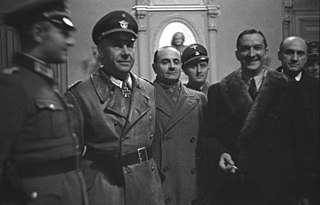 W
WThe Sicherheitspolizei, often abbreviated as SiPo, was a term used in Germany for security police. In the Nazi era, it was used to describe the state political and criminal investigation security agencies. It was made up by the combined forces of the Gestapo and the Kriminalpolizei between 1936 and 1939. As a formal agency, the SiPo was incorporated into the Reich Security Main Office (RSHA) in 1939, but the term continued to be used informally until the end of World War II in Europe.
 W
WThe Steinwache is a memorial museum in Dortmund, Germany.
 W
WThe Topography of Terror is an outdoor and indoor history museum in Berlin, Germany. It is located on Niederkirchnerstrasse, formerly Prinz-Albrecht-Strasse, on the site of buildings, which during the Nazi regime from 1933 to 1945 was the SS Reich Security Main Office, the headquarters of the Sicherheitspolizei, SD, Einsatzgruppen and Gestapo.